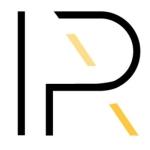Kiwis Facing Greater Risk of UV Radiation – Research
The record breaking warm weather this summer has bought with it an increased risk of drought, fires and now skin cancer according to latest research.
Skin cancer monitoring service MoleMap analysed recent NIWA data and found that dangerous ultraviolet or (UV) radiation increased by 17% this summer*.
Dermatologist Dr Mark Gray, a skin cancer specialist and the medical director at MoleMap says ultraviolet radiation is the main factor responsible for skin cancers.
He says Kiwis should be concerned with the increased UV radiation and while it was nice to enjoy the additional 35% more sunlight hours this summer they come with a price.
Dr Gray says skin cancer is the most common form of cancer in New Zealand with more than 45,000 Kiwis affected by it each year and around 400 dying annually from the disease.
This summer he says the 17% increase in UV exposure would mean Kiwis were subjected to much more of the dangerous UVA and UVB wavelengths.
Dr Gray says the World Health Organisation (WHO) has identified broad spectrum UV as a human carcinogen.
“The solar UV wavelengths differ in nature and the way in which they damage the skin. UVA is long wavelength UV which accounts for the vast majority of solar UV radiation which reaches the earth,” says Dr Gray.
“UVA can penetrate glass and clouds and can initiate and also increase the growth of skin cancers. UVB is responsible for burning, tanning, the acceleration of skin ageing and plays a significant role in the development of skin cancer,” he says.
Dr Gray says the greater exposure to both types of radiation over the summer period provides a timely reminder for Kiwis to have their moles checked.
“We need to be vigilant about protecting ourselves from the sun, limiting exposure along with regular and long term skin monitoring with your health professional which is crucial in preventing the development of melanoma,” says Dr Gray.
MoleMap is the world’s most advanced melanoma surveillance programme which combines state of the art technology with the skills of specialist dermatologists to diagnose and detect melanoma at the earliest possible stage.
*MoleMap analysed NIWA Data:
Average 1pm Observed UV Index at the Leigh weather station
1 Dec 11 – 20 Feb 12 = 7.84
1 Dec 12 – 20 Feb 13 = 9.19
(Observed index is the actual measurement as opposed to the Model UV Index which assumes clear sky etc.)
Total Sunshine hours at Mangere weather station (Sun hours not available at the Leigh UV station)
1 Dec 11 – 20 Feb 12 = 434.4
1 Dec 12 – 20 Feb 13 = 586.5
